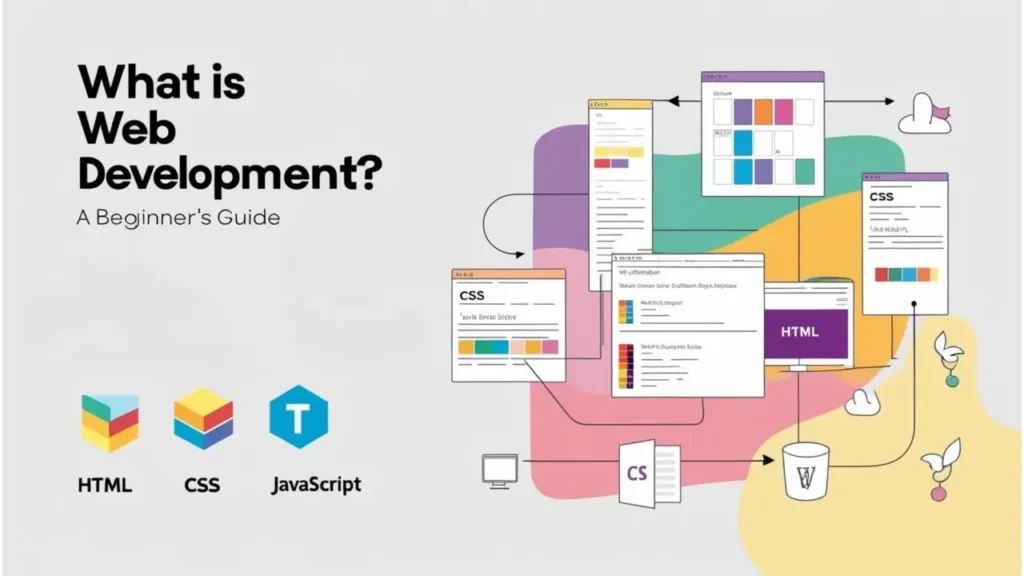In the rapidly changing landscape of technology, Software as a Service (SaaS) platforms have emerged as critical components for businesses aiming to enhance efficiency, scalability, and innovation. As we move deeper into 2024, the impact of these advanced SaaS platforms is evident across various sectors. From improving operational workflows to redefining customer interactions, these solutions are no longer just supplementary tools; they are foundational to business success. This blog explores how advanced SaaS platforms are revolutionizing the business environment in 2024, highlighting their features, benefits, challenges, and future trends.
Key Takeaways
- The Rise of SaaS Platforms
- Key Benefits of Advanced SaaS Platforms
- Key Features of Advanced SaaS Platforms in 2024
- Challenges Facing SaaS Platforms
- Future Trends in SaaS Platforms
Table of Contents
The Ascendancy of SaaS Platforms
The SaaS model has transformed software delivery over the past decade. By offering software solutions over the internet, SaaS platforms eliminate the need for businesses to invest in extensive hardware and infrastructure. Companies can access applications on a subscription basis, democratizing access to sophisticated software capabilities. In 2024, the global SaaS market is projected to exceed $400 billion, fueled by the growing demand for cloud-based solutions and the acceleration of digital transformation.
The Shift Towards Cloud-Based Solutions
The shift to remote work and the increasing necessity for flexible work environments have significantly accelerated the adoption of SaaS platforms. With applications hosted in the cloud, organizations can facilitate collaboration, project management, and communication among distributed teams. Advanced SaaS platforms not only enable remote work but also foster a culture of innovation by allowing employees to leverage powerful tools from anywhere.

Key Benefits of Advanced SaaS Platforms
1. Cost Efficiency
One of the most compelling advantages of advanced SaaS platforms is their cost-effectiveness. Unlike traditional software models, which often involve substantial upfront investments for licenses and hardware, SAAS platforms operates on a subscription basis. Businesses only pay for what they use, allowing for better financial planning and reduced capital expenditures. This financial flexibility is especially valuable for small and medium-sized enterprises (SMEs) looking to leverage advanced software solutions without breaking the bank.
2. Scalability and Flexibility
SaaS platforms are inherently scalable, making them suitable for businesses of all sizes. Companies can easily adjust their usage up or down based on fluctuating needs. This flexibility allows organizations to grow without the constraints imposed by traditional software deployments. For example, a startup can begin with a basic plan and scale to more comprehensive solutions as its needs evolve, ensuring that they are always aligned with their business objectives.
3. Accessibility and Collaboration
With the increasing emphasis on remote work, accessibility has become a crucial factor for businesses. Advanced SaaS platforms allow employees to access applications and data from anywhere with an internet connection. This capability enhances productivity and fosters collaboration among teams scattered across different locations. Real-time communication tools integrated into SaaS platforms further facilitate teamwork, enabling employees to share ideas and collaborate seamlessly.
4. Automatic Updates and Maintenance
Another significant advantage of SaaS platforms is the automatic updates and maintenance provided by service providers. Businesses no longer need to worry about software updates, security patches, or system maintenance. This allows organizations to focus on their core activities while ensuring they are always using the latest technology. Additionally, continuous updates often introduce new features and functionalities that improve user experience and overall performance.
5. Integration and Customization
Advanced SaaS platforms often come with robust integration capabilities. Businesses can connect various tools and services to create a customized tech stack tailored to their specific needs. For instance, integrating a CRM SaaS platform with marketing automation tools can streamline customer engagement and enhance sales efforts. This customization is vital for businesses looking to optimize their workflows and improve operational efficiency.
Essential Features of Advanced SaaS Platforms in 2024

As we navigate 2024, several key features of advanced SaaS platforms are shaping the future of business operations:
1. Artificial Intelligence and Machine Learning
The integration of artificial intelligence (AI) and machine learning (ML) into SaaS platforms is a game-changer for businesses. These technologies enable advanced data analytics, predictive modeling, and personalized customer experiences. For instance, AI-driven SaaS platforms can analyze customer behavior and provide tailored recommendations, significantly enhancing sales and marketing efforts. According to a recent study, businesses leveraging AI in their SaaS solutions have reported a 30% increase in sales efficiency.
2. Enhanced Security Measures
As organizations migrate to the cloud, data security is a paramount concern. Advanced SaaS platforms are addressing these challenges with robust security protocols, including multi-factor authentication, end-to-end encryption, and regular security audits. These measures ensure that sensitive data is protected, helping businesses maintain customer trust and comply with regulations like GDPR and CCPA.
3. User-Friendly Interfaces
In 2024, user experience remains a critical focus for SaaS platforms. Solutions are increasingly designed with intuitive interfaces, making them easier for users to navigate and utilize. A user-friendly experience not only enhances productivity but also reduces the learning curve for new employees. SaaS providers are prioritizing design thinking to ensure their platforms are accessible and enjoyable for all users.
4. Collaboration Tools
Advanced SaaS platforms are incorporating a variety of collaboration tools that facilitate communication and teamwork. Features such as real-time editing, shared workspaces, and integrated messaging capabilities are vital for remote teams. These tools enhance collaboration, ensuring that team members can work together effectively, regardless of their physical location.
5. Analytics and Reporting
Advanced analytics and reporting features in SaaS platforms allow businesses to derive actionable insights from their data. With real-time dashboards and customizable reporting tools, organizations can track performance metrics and make data-driven decisions quickly. This capability is essential for identifying trends, optimizing strategies, and ultimately driving growth.
Challenges in Adopting SaaS Platforms

Despite the numerous benefits, businesses must navigate several challenges when adopting SaaS platforms:
1. Data Privacy Concerns
Data privacy is a critical concern as organizations migrate to the cloud. Businesses must ensure that their SAAS platforms providers comply with stringent regulations regarding data protection. Understanding how data is stored and managed is crucial for maintaining customer trust. Many companies are now conducting thorough due diligence on SaaS vendors to ensure they meet necessary compliance standards.
2. Vendor Lock-In
Vendor lock-in remains a significant concern for businesses that rely heavily on a single SaaS provider. Migrating to another platform can be complex and costly, making it essential for companies to carefully evaluate their options before committing to a specific vendor. Organizations can mitigate this risk by choosing SaaS solutions that support open standards and offer portability.
3. Internet Dependence
The reliance on internet connectivity is both a strength and a weakness of SaaS platforms. While they provide flexibility and accessibility, they can also pose challenges in areas with limited or unreliable internet access. Businesses must have contingency plans in place to address potential downtime, ensuring that operations can continue smoothly even in adverse conditions.
Future Trends in SaaS Platforms
As we look ahead, several trends are likely to shape the future of SaaS platforms:
1. Vertical SaaS Solutions
The rise of vertical SaaS solutions—industry-specific applications tailored to meet the unique needs of specific sectors—is gaining momentum. These platforms provide specialized functionalities that general-purpose SaaS solutions may not offer, allowing businesses to leverage tools designed explicitly for their industry. For example, healthcare organizations can benefit from SaaS platforms that cater to their regulatory and operational needs.
2. Low-Code and No-Code Development
Low-code and no-code development platforms are making it easier for businesses to create custom applications without extensive programming knowledge. As these solutions become more integrated into SAAS platforms offerings, organizations can develop tailored applications that address their specific challenges quickly. This democratization of application development empowers teams to innovate without relying solely on IT departments.
3. Sustainability Initiatives
With growing awareness around environmental sustainability, SAAS platforms providers are increasingly prioritizing sustainability initiatives. This includes optimizing data centers for energy efficiency, reducing carbon footprints, and offering tools that help organizations track their sustainability efforts. Many companies are now seeking SaaS solutions that align with their environmental goals.
4. AI-Powered Insights
The future of SaaS platforms will increasingly involve AI-powered insights that help businesses make data-driven decisions. These insights will provide actionable recommendations based on historical data, customer behavior, and market trends, further enhancing business agility. As AI continues to evolve, its integration into SaaS platforms will become even more sophisticated, enabling companies to stay ahead of the competition.
5. Increased Focus on Customer Experience
As competition intensifies, SaaS providers will prioritize enhancing the customer experience. This will involve more personalized interactions, improved onboarding processes, and better support services to ensure customers derive maximum value from their investments. A focus on customer success will be critical for SaaS providers looking to differentiate themselves in a crowded market.
For more information, click here
F&Q
1. What are SaaS platforms?
SaaS (Software as a Service) platforms are cloud-based applications that allow users to access software over the internet rather than installing it on local devices. This model enables subscription-based access, providing flexibility and scalability.
2. How do SaaS platforms improve business efficiency?
SaaS platforms enhance business efficiency through cost savings, easy scalability, automatic updates, and improved collaboration. They allow teams to work remotely and access necessary tools from anywhere, fostering productivity.
3. What are the benefits of using advanced SaaS platforms?
The primary benefits include cost efficiency, scalability, accessibility, automatic maintenance, and the ability to integrate with other applications, providing a customizable technology stack tailored to business needs.
4. What challenges do organizations face when adopting SaaS platforms?
Organizations may encounter data privacy concerns, vendor lock-in, and dependence on internet connectivity. It’s essential to assess these risks and develop strategies to mitigate them.
5. What future trends are expected in SaaS platforms?
Key trends include the rise of vertical SaaS solutions tailored for specific industries, low-code and no-code development for custom applications, increased focus on sustainability, and enhanced customer experience through personalized services.
6. How do AI and machine learning integrate into SaaS platforms?
AI and machine learning enhance SaaS platforms by providing advanced analytics, predictive modeling, and personalized customer experiences. This integration helps businesses make data-driven decisions and optimize operations.
7. Are SaaS platforms secure?
Many advanced SaaS platforms implement robust security measures, including multi-factor authentication and data encryption. However, organizations should conduct due diligence to ensure that their chosen providers comply with relevant security standards.
8. Can SaaS platforms support remote work?
Yes, SaaS platforms are designed to facilitate remote work by allowing access to applications and data from any internet-connected device. This flexibility is critical for supporting distributed teams and enhancing collaboration.
Conclusion
As we embrace 2024, advanced SaaS platforms are revolutionizing the way businesses operate, innovate, and grow. With their myriad benefits—including cost efficiency, scalability, and accessibility—SaaS solutions have become essential tools for organizations across industries. The integration of AI, enhanced security measures, and user-friendly interfaces are further propelling these platforms into the future.
While challenges such as data privacy concerns and vendor lock-in exist, the potential for transformation through SaaS platforms is undeniable. By staying abreast of emerging trends and leveraging advanced features, businesses can harness the full potential of SaaS to thrive in an increasingly competitive landscape.
In summary, advanced SaaS platforms are not just tools; they are vital components of the modern business ecosystem, enabling organizations to navigate the complexities of today’s digital world and prepare for the future. Embracing these platforms is essential for businesses seeking to unlock new opportunities and drive sustainable growth in 2024 and beyond.
Visit our Website today to learn more : Wodo Digital.












